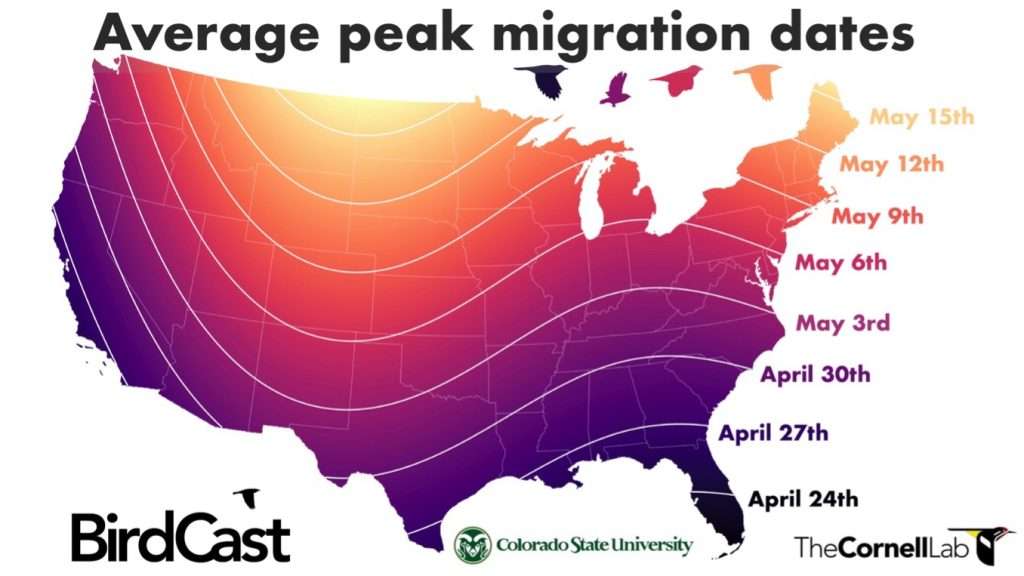 Spring bird migration has begun. Under cover of darkness, 2.5 to 3.5 billion birds will fly northward to their breeding grounds in the United States and Canada. According to the Cornell Lab of Ornithology, now is one of the most important times of year to keep birds safe by reducing non-essential lighting at night and treating window glass so birds can see it and avoid deadly collisions.
Spring bird migration has begun. Under cover of darkness, 2.5 to 3.5 billion birds will fly northward to their breeding grounds in the United States and Canada. According to the Cornell Lab of Ornithology, now is one of the most important times of year to keep birds safe by reducing non-essential lighting at night and treating window glass so birds can see it and avoid deadly collisions.
“Up to a billion birds die each year in the United States when they crash into windows and other structures made with reflective or transparent material,” said Andrew Farnsworth, a visiting scientist at the Cornell Lab of Ornithology. “Numerous studies have shown that light attracts and disorients birds as they migrate at night. They’re drawn closer to buildings where they collide with glass. One billion birds killed annually in collisions means approximately 30 birds die from window collisions every second in the U.S.”
To help prevent collisions, turn out non-essential lighting from 11 pm to 6 am, or draw curtains to keep light inside. Add shields to external lighting to direct light downward and out of the skies. Reducing light pollution year round benefits wildlife, human health, and energy savings.
In New York State, the Lights Out program directs State-owned and managed buildings to turn off non-essential outdoor lighting from 11 pm until dawn during the spring migration in New York State from April 15 through May 31, and also during the peak fall migration, August 15 through November 15.
State agencies are also encouraged to draw blinds, when possible, and turn off non-essential indoor lighting during Lights Out times. In addition to benefiting migrating birds, Lights Out promotes sustainability and provides a cost-savings to the state.
Stopping bird collisions also means making glass safer by day. Birds don’t see glass as a solid surface and can fly into it at full speed, often resulting in injury or death. Making glass visible includes breaking up reflections of sky and trees and other vegetation. Simple window treatments may include decals or cords spaced 2 inches apart on the outside of glass.
A 2014 study estimated that most bird-window collisions in the U.S. occur at residences and low-rise buildings. Once treated, windows will be safer for birds all year round.
Migration studies from the Cornell Lab and partners have found:
- Birds attracted by the glow of artificial light at night are drawn into areas where they are also exposed to higher concentrations of airborne toxic chemicals.
- In the Western Hemisphere, nighttime light pollution levels are increasing the most in the southeastern United States, Mexico, and Central America.
- Mass bird deaths at a building studied in Chicago could be reduced around 60% by decreasing lighted window areas.
- The BirdCast website forecasts nightly levels of bird migration up to three days in advance. Its Migration Dashboard reveals how many birds are overhead on any given night right down to the county level.
“It’s such an exciting season, with birds migrating through neighborhoods all across the U.S. and Canada to their summer breeding grounds,” said Julia Wang, a Cornell Lab of Ornithology project leader who’s been working on Lights Out efforts. “If we do our part to turn out lights and make glass safer, we can give birds the best chance to survive, make it safely to their destinations, and raise the next generation.”
Illustration: Map showing peak migration dates in the United States, 2024 (Cornell Ornithology Lab).


